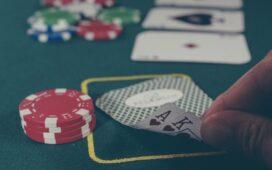The object of the Game
Take out every single square from the apex, and thereafter stack it on top. The last player to stack a square without making the zenith fall overwhelms the match!
Plan
Void the squares onto a level surface.
One individual purpose of this stacking plate is to foster the zenith by putting layers of three wooden squares at right focuses to each other. Right when you finish, you’ll have a solid, 18-story tower that can pass twofold during call bridge play!
Warily stand this stacking plate upstanding, then, dispose of it so the apex stays without assistance from any other person.
Game Play
The player who manufactured the recoil goes first. Play passes aside.
On your turn: Carefully dispose of a square from wherever underneath the most critical completed story. Use simply a solitary hand! Then, stack the square on top of the apex at right focuses to the squares just underneath it,
Disposing of and Stacking Blocks
Dispose of and stack one square for each turn. Remember – use simply a solitary hand (you can switch hands whenever you wish).
As play proceeds and the weight of the zenith moves, a couple of squares become looser than others and are easier to wipe out. You can contact various squares to consider to be a free one – yet if you move a square off-kilter, you should fix it (using one hand only) before reaching another square.
While stacking, for the most part, total a 3-block story before starting a higher one.
Your turn closes 10 seconds after you stack your square – or when the player aside gets in touch with one.
Keep taking out and stacking blocks until someone topples the apex. A certified master can develop a zenith 36 stories high or more.
End of the Game
Accepting at least for a moment that you’re the last player to stack a square without cutting down the apex, you win.
The player who makes the apex fall will set up the zenith for the accompanying game.
Re-limit
Collect a Jenga tower using the stacking plate. Mindfully get the stacking plate and zenith and spot both inside the case.
Jenga Variant Rules
Resulting in taking out a square, pick someone else to answer the question
- Solo Play
Play alone for preparing! Could you have the option to top your record stature before the zenith falls?
Warily dispense with one square from any level. Use a reliable hand to stack it on top.
Continue to wipe out and stack squares to create the zenith taller… additionally, shakier.
How tall is unnecessarily tall? Sort out when the apex falls!
- Jenga Chips
Parts
A lot of jenga game.
A lot of poker ships.
Game Play
All customary standards apply with the going with increases: Everyone starts with a chip.
At the point when it’s all up to a player, he ought to do one of the going with:
Passes and spot one chip in the center as the award.
Pays the bank one dollar, draws a square, and puts it on the top. Two things could happen:
The apex stays: accumulates 2 chips from the bank and takes the amassed reward.
The zenith falls: accumulates no chips and pays the last player to put a chip an enormous part of his chips (assemble). If he is the last player, the chips are placed in the prize taking everything into account.
The accompanying round begins with any abundance reward. The player near the individual who tumbles the zenith goes first.
Winning
The chief player to get an agreed proportion of chips wins.
Then again, the game completions when an agreed number of rounds have been played and the player with the most chips wins.
- Gatherings of Two
Segment bundle into gatherings of two get-together people each. Accepting there is an odd number of get-together people and I am relied upon to make even gatherings I help out the social event.
Right when I play, I endeavor to allow the get-together to part I am coordinated with beginning to stand out and amplify their time in the game. Expecting that you are participating, guarantee you follow them like every other individual call yourself on any standard encroachment and any disciplines.
I incline in the direction of the accomplices to be across the room from each other as opposed to sitting near each other.
“No Talking” – Optional/Additional Rule
Associates are not allowed to verbally convey once they leave their seat (until they return to their seat). This propels them to be more imaginative in their gameplay using non-verbal correspondence.
Expecting a partner talks, in any way, that gathering should move a disciplined piece after they move their special piece. If they talk a couple of times they need to move a piece for each time they talk.










